All About Irrigation Hoses
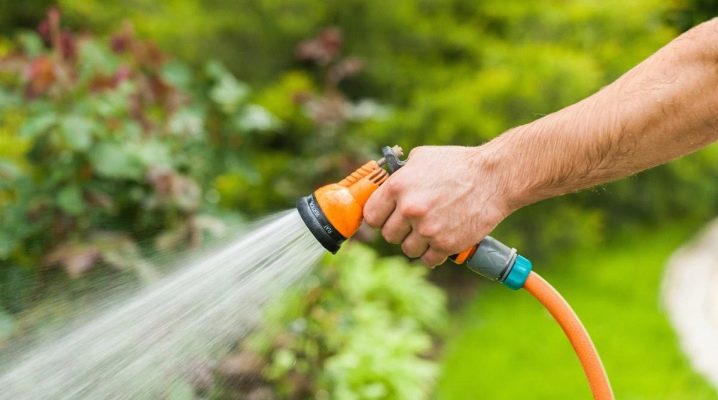
Not a single garden tree, shrub or even flower can be grown healthy and beautiful without high-quality watering. This is especially true for arid southern regions, where the air temperature in summer rises to extremely high levels, and rain has to wait for several weeks.
So that vegetables and fruits do not die from a lack of moisture, special irrigation hoses are used in private and industrial farms. This can be one simple product or a whole complex pipeline system through which water is supplied to the interior and to the surface of the soil. Hoses can be of different lengths and purposes, made of different materials and using different technologies. To understand what kind of product is required in each specific case, it is necessary to have a general idea of all the types and features of such products.

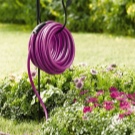


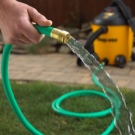
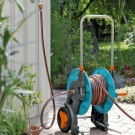
This will help you not to overpay when buying and not to face emerging difficulties already during operation.
Peculiarities
Garden water hoses have replaced the usual buckets and watering cans that used to water the site decades ago. With the proliferation of central plumbing and well pumps, it became possible to replace heavy physical labor with lighter manual or even automated irrigation. Among the functions of garden hoses are:
- directly watering;
- water supply from a container, tap or well;
- pumping water into a tank, bath or other container.
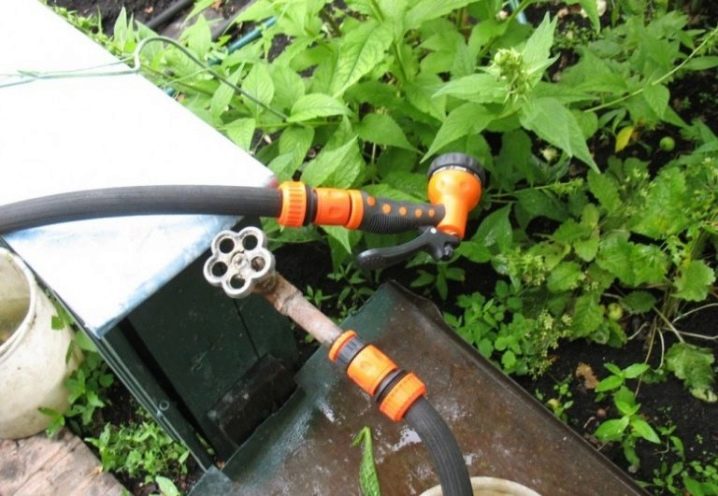
Flexible sleeves made of rubber or other materials allow you to move around without any problems while watering plants, reach the most remote areas and fill irrigation containers, in which the water will be heated to an acceptable temperature under the rays of the warm summer sun. Since these procedures are performed almost daily, and a person is constantly in contact with the material and liquid with his hands, garden hoses must meet certain requirements.
- Security. First of all, the material of the goods must be completely safe for humans, animals, and even more so for plants. Ideally, such a hose should be labeled as suitable for supplying potable water.
- Water flow rate. The hose must be able to pass a sufficiently large volume of water through it per unit of time. This will help to quickly fill any container, and watering itself can be carried out using nozzles that limit the force of the stream.
- Convenience. The product should be simple and convenient both in operation and during storage. It should not require a particularly careful attitude, be fragile or have many unnecessary additional functions.
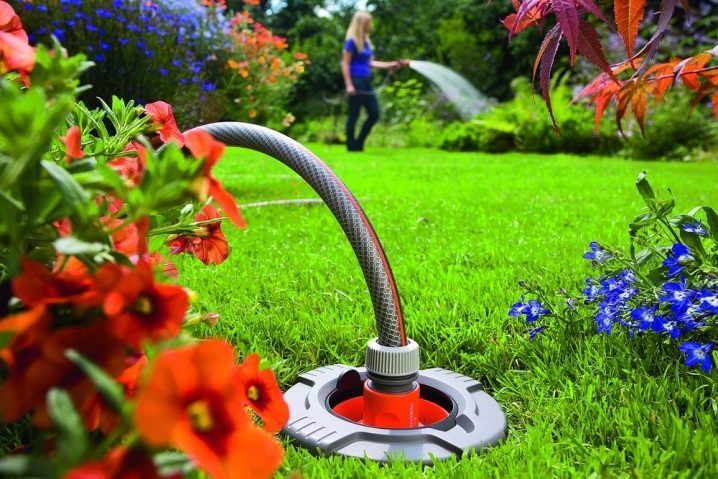
Specifications
The choice of a garden hose is not limited to its compliance with the requirements. Its characteristics play an equally important role.

Length
The easiest way is to choose the length of the hose, since it directly depends on the length and width of the section. The correct length should allow you to easily stretch the hose for supplying water from its source to any bed of the site. In this case, it is also advisable to leave a small margin of length just in case. It should also be borne in mind that there may be various structures or obstacles in the path of the hose. Therefore, the length should be calculated on the basis of the path that a person takes to get to a certain point in the garden or vegetable garden.
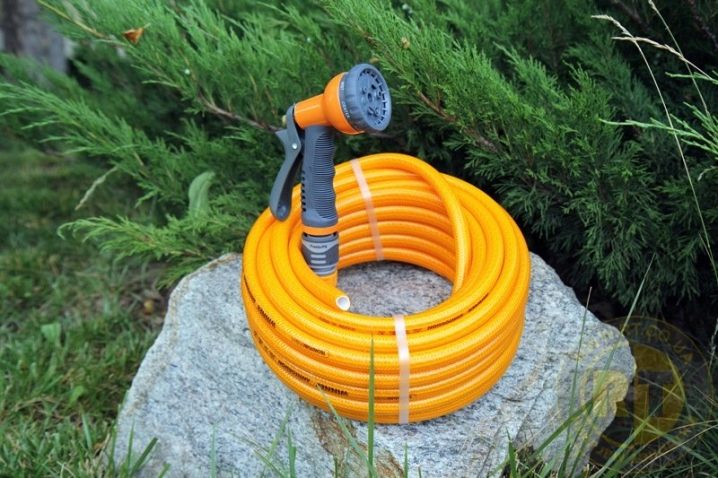
Before buying, it is advisable to draw on a sheet an approximate plan of the site with the location of the water source, all the beds and plantings, as well as residential and outbuildings. By measuring all the distances that you need to pull the hose, you can get its minimum required length. It is worth remembering that for drip or oozing irrigation, it is necessary to lay a rubber sleeve on each side of each of the beds, so all their sizes will have to be doubled.
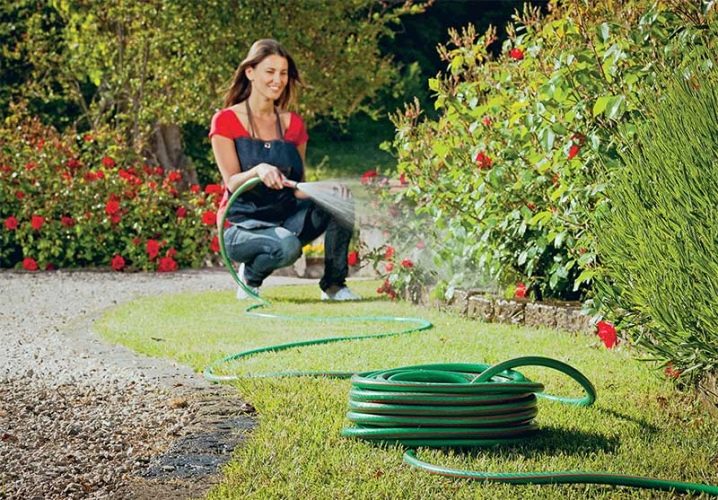
In the event that the length turns out to be too impressive and there is a danger of simply getting entangled in the rubber "web", which will certainly arise from moving around the area during watering, you can divide one product into several shorter ones. Such segments are easily assembled into a system using connectors in the form of crosses or tees, to which the segments of the sleeves are attached with metal clamps. Unfortunately, the more such connections, the slower and worse the water supply.

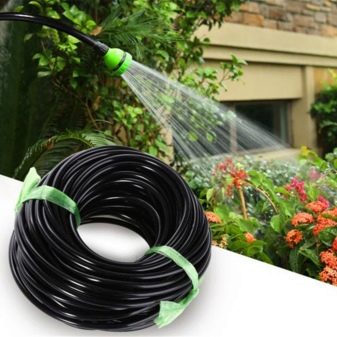
Diameter
To choose the right diameter of the hydraulic hose, it is enough to adhere to one simple rule: the inner diameter of the product should be in direct proportion to its length. Thus, the longer the hose itself, the larger it should be in diameter, and with it the throughput. It is in this case that the water pressure will be strong and continuous. If the diameter is too small for a long sleeve, pressure can damage it. In the event that the diameter is too large, and the hose itself is very short, instead of a good pressure at the outlet there will be just a small trickle, since the entire pressure is minimized inside.
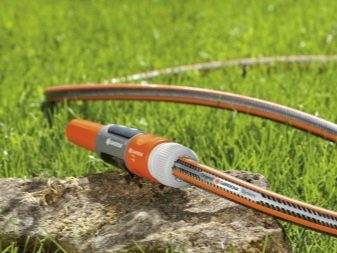
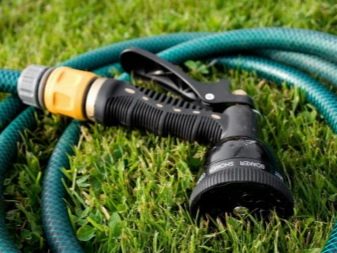
It is also worth paying attention to the force of the water pressure from the source. If it is very weak, even with a long hose length, it is worth choosing a smaller diameter.
Operating pressure
By choosing "working pressure" most often means choosing the thickness of the garden hose walls that can withstand a certain water pressure on them. Standard rubber hoses with one layer of material are able to withstand up to 2 bar, and reinforced multilayer ones - up to 6 bar. Both for a small vegetable garden or a pair of flower pipes, and for a huge plot with a whole garden, both the first and second options may be suitable. It all depends on the water pressure in the tap or pump.
In any case, it is better to play it safe a little and take a hose with a working pressure a little more than necessary, otherwise the product may simply burst.

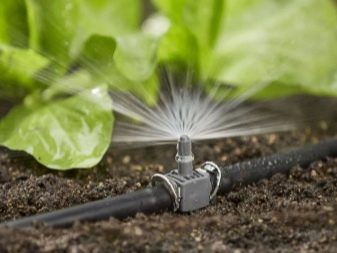
Temperature Range
Almost all garden hoses are used exclusively during the summer season. Therefore, for the middle band, their limit of the permissible air temperature that the surface of the product can withstand should be at least +40 degrees. Moreover, even in winter, the hoses are removed to outbuildings, where the temperature can drop to -20 degrees. A high-quality hose can withstand such fluctuations without any problems.
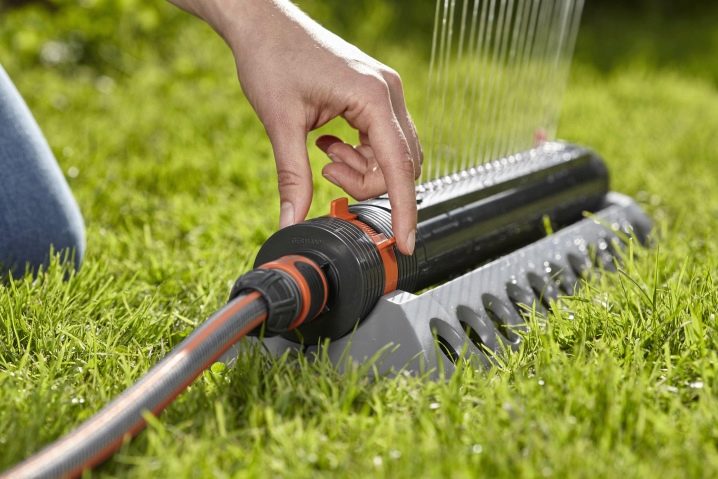
Transparency
There are almost completely transparent materials, as well as regular materials, colored or black. Of course, the first option is much more convenient to use. In the event that any debris gets inside the product and clogs it, the transparent walls will make it easy to find this place and help to deal with the blockage. But if the blockage occurs in an opaque sleeve, you will have to look for this place only by touch, and in case of failure, just buy a new product.
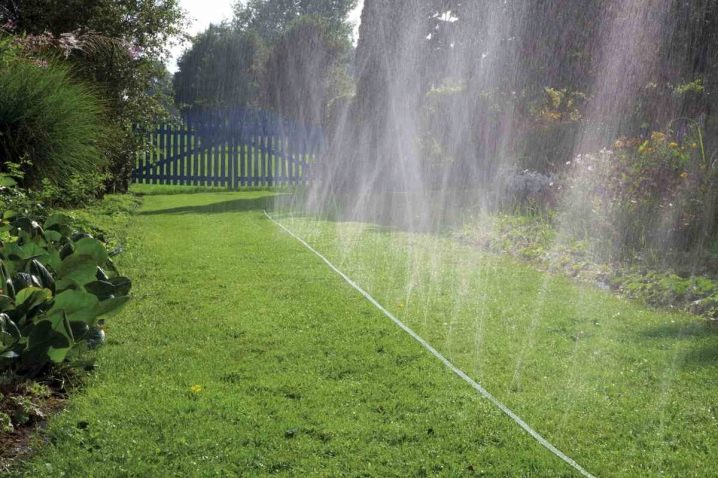
Classification
Despite the apparent simplicity of garden hoses, the number of varieties is impressive. In many hardware stores, they are assigned whole walls or huge stands. These products are distinguished not only by material, but also depending on their purpose and manufacturing technology.

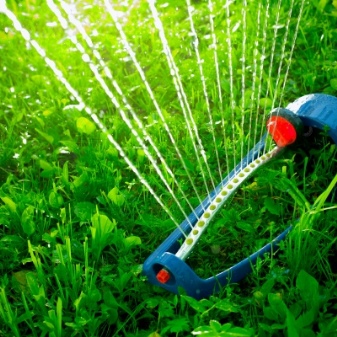
By material of manufacture
Depending on what material was used for the manufacture of a particular model, their strength, durability and operating conditions can vary significantly.
- Rubber. The material allows the hose to withstand fluid pressure of as much as 8 atmospheres. It can be stored both in a warm and unheated room, it is resistant to direct sunlight and active chemical reagents. Unfortunately, it is forbidden to use rubber products for drinking water supply, as this material is quite toxic. Gut-like, hydraulic hoses are excellent at handling compression and twisting. The rubber hose can be either soft enough and flat-rolled, or hard, more like a pipe. Such pipes are very heavy, but they are capable of functioning in the temperature range from -30 to +90 degrees.
This material is one of the most popular for both permanent irrigation networks and temporary manual irrigation. Their service life is 10 years or more.

- PVC.The wall thickness of PVC hoses varies from 1.5 to 3 mm and can withstand water pressure up to 3 atmospheres. In this case, the pressure at the outlet of such a product will be much higher than that of a rubber hose. The service life is limited to 3-4 years, and at low temperatures the plastic hose loses its flexibility and becomes very fragile. PVC can be used only at temperatures not lower than +5 and not higher than +20 degrees during the ripening period of crops. And they must be stored in heated storage rooms or insulated garages.

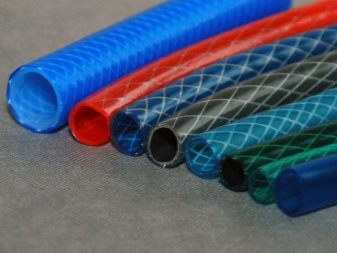
- Nylon.The flat, water-free hose, woven from fine nylon threads, bends well and is very durable at the same time. This woven fabric is very lightweight, which makes the water hose easy to fold and carry. Such products can withstand a pressure of 3-5 atmospheres, depending on the thickness of the threads and the density of weaving. However, they can be used exclusively at freezing temperatures, and stored only in heated rooms. It is better to carry such a hose rather than pull on the ground. A large stone, wire and any other sharp debris or obstacle can catch, pull and even break the nylon thread. The service life of such a product will be from 2 to 4 years, depending on the observance of the rules of operation and storage.
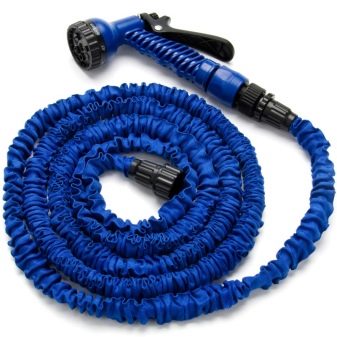
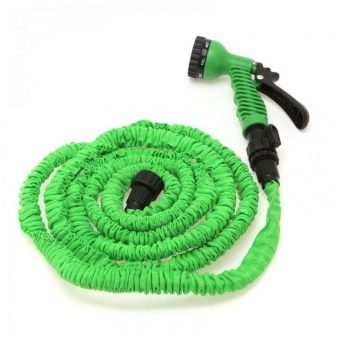
- Thermoplastic elastomer. The material will withstand water pressure of more than 8 atmospheres. It is very frost-resistant, does not deform and does not become brittle even in frost. The lightweight, kink-resistant and chemically-resistant TPE hose can last more than 15 years. It can be used for year-round watering of plants both in open beds and in greenhouses. It is capable of operating in a temperature range of -50 to +90 degrees.

- Silicone. Such material is very elastic, it expands under the influence of heat and is not afraid of twisting and kinking. Its temperature range is limited to -20 and +40 degrees. Special "miracle hoses" are made of silicone and latex, which stretch for several meters and allow you to reach even the most distant bushes or beds. But silicone is not designed for high-pressure water supply and is not used for uncontrolled gravity irrigation.
It is able to withstand pressure up to 3 atmospheres, no more.
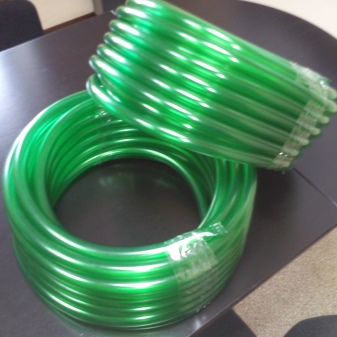
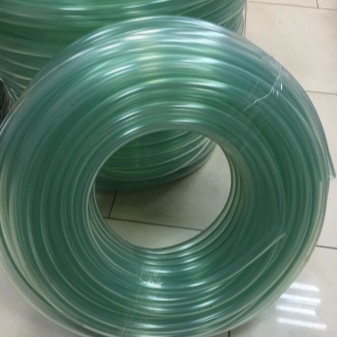
By type of execution
Depending on the type and manufacturing technology of a garden hose, it can have various additional properties. The more there are, the correspondingly higher the price for the product.
- Single layer. Such hoses, without additional coatings, both inside and outside, are not very resistant to aggressive chemical compounds, temperature changes and the effects of an aggressive environment. Often they are used only for overflowing liquid from one reservoir to another or for irrigation in very small areas with a couple of beds.
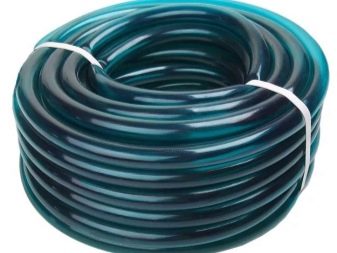
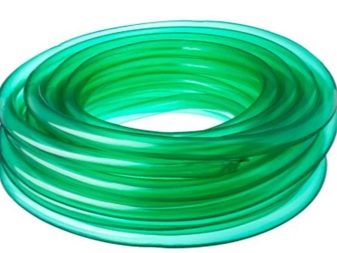
- Multi-layered. The hose has two or more additional inner and / or outer coatings. It is resistant to direct sunlight, can withstand both higher and lower temperatures, and does not require warm storage.Multilayer sleeves work well at high fluid pressure, they are not afraid of twisting and stretching.
They are often used for stationary watering of an area in the summer season, and for storage such a hose can be twisted into a bay.
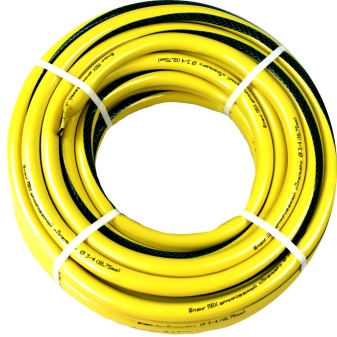
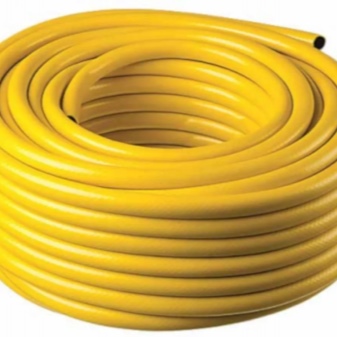
- Reinforced. Products made with special reinforcing threads made of metal or harder plastic are even stronger and more durable than multilayer ones. Although they are heavier, they can be used in harsh weather conditions and with high loads. They withstand a pressure of almost 10 atmospheres and are more often used in industry than in private households.
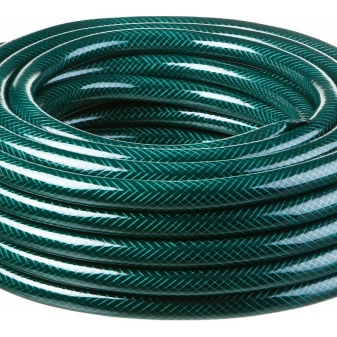
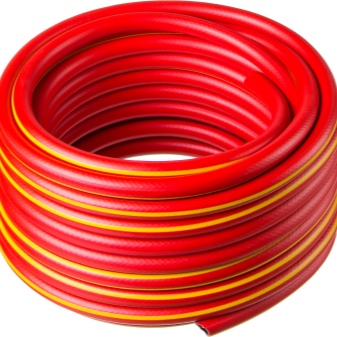
- Stretchable. These hoses are manufactured using the hose-in-hose technology and are complex in design. The inner layer is made of a thin rubber material that stretches perfectly, and the upper "cover" is woven from strong nylon threads and is assembled with an accordion. It limits the stretching of the bottom layer to a certain length and prevents it from tearing. The high durability of this “miracle hose” is ideal for daily irrigation with constant water pressure.
It is very flexible, but does not tolerate low temperatures and requires extra care when used.
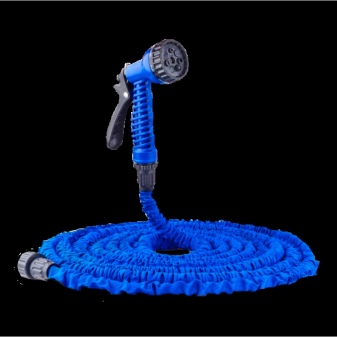
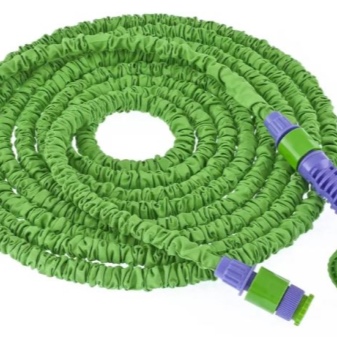
- Spiral. Most often, such hoses are made of polyurethane, their working pressure is 5 atmospheres, and the length in an extended state is from 18 to 23 meters. They are used exclusively for manual irrigation with a directional focus and only at positive temperatures. Due to the complex spiral design, such a hose is protected from strong kinks and twists, which allows water to be supplied without interruption at constant pressure.
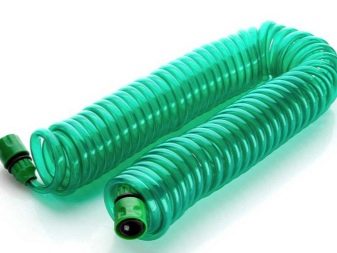

- Corrugated. This hose can be called a type of multilayer product. Its top layer is made of a corrugated protective material that gives it greater strength and rigidity. At the same time, the hose remains sufficiently flexible and light, since the coating is made in the form of thin rings connected to each other, and not a single monolith. Such a hydraulic hose is universal and is used for irrigation both in industry and in summer cottages and garden plots.

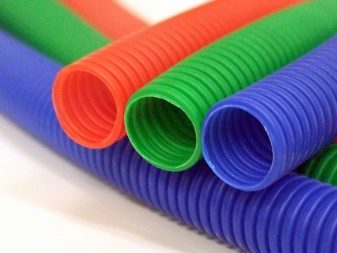
By appointment
Since irrigation can be carried out either under human control using manual force or by gravity, the hoses also differ. into several types depending on their purpose.
- Traditional. The product is not transformed or changed, it can be used in conjunction with a special nozzle gun or spray. It is reliable and versatile. It can be used to water plants from above or directly under the root.
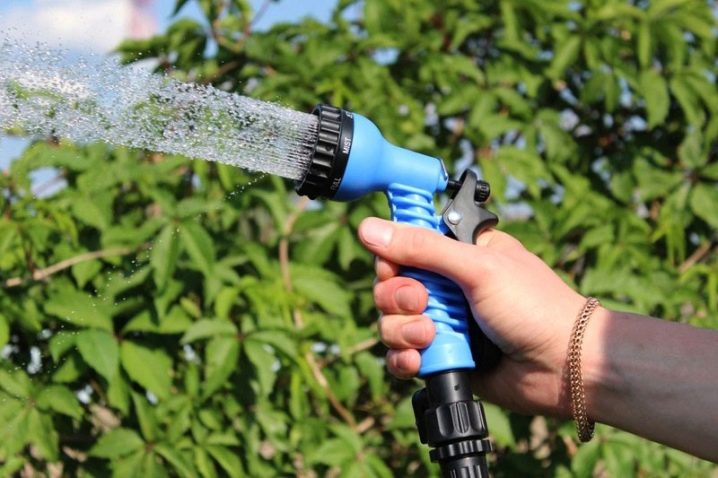
- Drip. Along the entire length of the hose, there are holes that are equally spaced from each other. It is placed under or on top of the soil and left in this position for several seasons.
Drip irrigation occurs at the root, so these hoses are not used for irrigation of all crops.
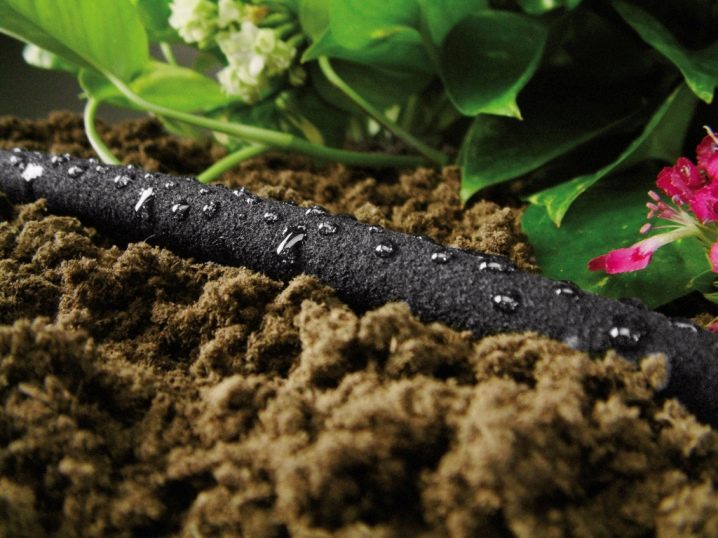
- Oozing or porous. Such hoses, like drip hoses, have holes along their entire length. However, these holes are so small that instead of large droplets, as in the previous model, the soil literally gets water dust. Such irrigation is perfect for economical water consumption in row plantings. Also, using this hose, you can arrange additional local watering for plants that are especially sensitive to dry soil.
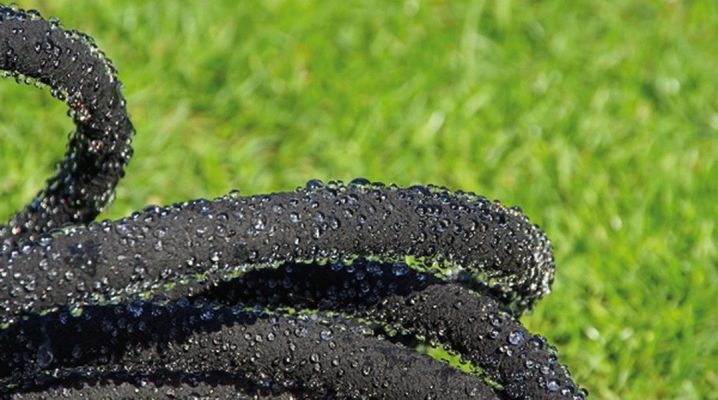
- Sprinkler.The hose also has holes, but unlike drip and oozing, it literally sprays water in different directions. This irrigation is similar to natural rain and is used to gently irrigate those plants that prefer surface irrigation to the vegetation rather than to the root.
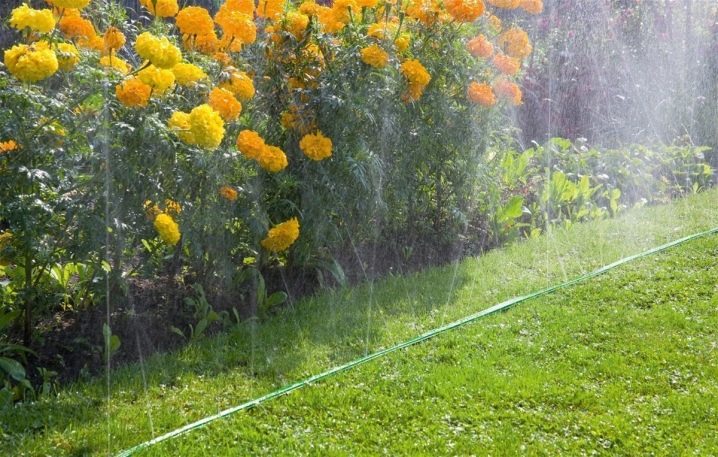
Manufacturers rating
Before you go to the store and purchase a hose for a summer cottage or garden, you should familiarize yourself with customer reviews on specialized sites. There are many different ratings that showcase the best gardening tool manufacturers.One of these manufacturers is the German company Karcher. In their catalogs, you can find a product made of almost any material and any size. The products are distinguished by their reliability, flexibility and durability. The average price for 20 meters of hose varies from 1,000 to 5,000 rubles, depending on additional properties.

Another famous company from Germany, which is known for its quality and wide range of products, is Gardena. Almost all of their products are reinforced with metal threads, and therefore withstand a very high pressure of water and do not lose their original shape and properties for many years. At the same time, the company does not use heavy metals in its production, which means that all products are environmentally friendly and harmless to humans. The price for 15 meters of hose starts from 1100-1200 rubles and depends on the diameter of the product.
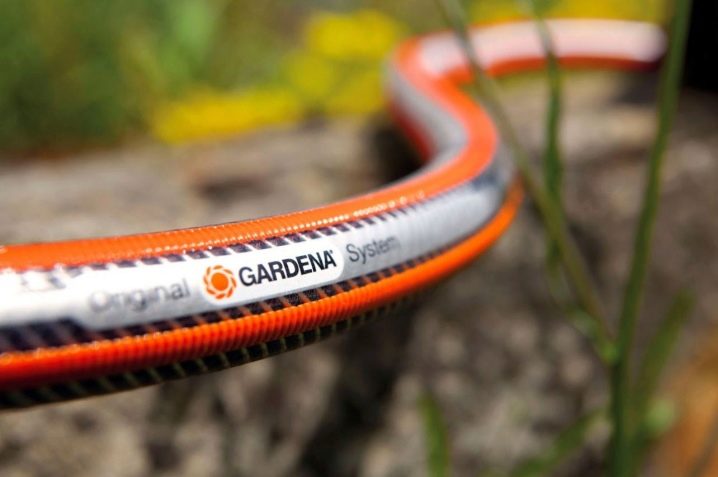
One of the popular manufacturers of silicone and PVC hoses is the Ukrainian company Verdi. Stretchable "miracle hoses" are best purchased from the Chinese company Xhose. And among the domestic manufacturer, Zubr and SIBRTECH are considered reliable companies.
Selection Tips
So that the purchase of a garden hose does not turn into a real test, and the result does not disappoint in the first season of operation, it is worth following certain rules.
- Don't save. Of course, any buyer wants to buy the product for the smallest amount. However, you should not stop your choice on too cheap single-layer options. It is always better to take multi-layer hoses of the middle price segment and from a familiar manufacturer with good reviews. Otherwise, excessive savings can go sideways and end up buying a new product instead of a broken one.
- Observe the water pressure. Before buying, you should find out the water pressure in a well pump or central water supply. Most often it is between 2 and 3 atmospheres. The hose should be chosen with a certain margin of safety, so that in the event of a slight increase in pressure, it does not burst and deform.
- Measure the area. If watering will take place in a small summer cottage or garden, you should not take a hose under a hundred meters long. This length is simply not needed and will interfere with work. The standard diameter of a typical garden hose is about 13 mm or 1⁄2 inch and is 10 to 15 meters in length. For regular spot irrigation, this will be sufficient. The main thing is that it is the inner, not the outer diameter. For longer lengths, the diameter must also be increased.
- Nozzles and stoppers. When choosing nozzles and connections, you should pay special attention to all rubbing parts. It is best if they are made of durable metal, but hard plastic will work as well. The locking mechanism must be wide enough to hold the hose securely.
- Sun and cold protection. If after each watering the hose will be reeled up for storage, then this criterion is not so important. But if a stationary irrigation system is mounted from it, then the material should tolerate long-term exposure to ultraviolet radiation well.
In the event that the irrigation system is installed for several years, the hoses should be able to survive even severe frosts and not crack.
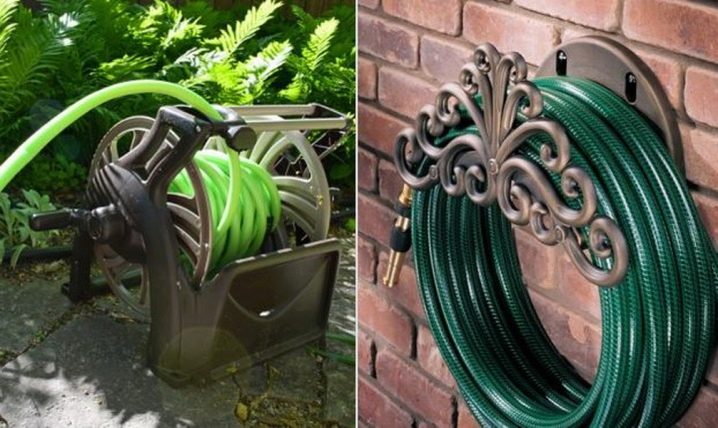
Subtleties of operation
Even the most reliable and expensive product will quickly fail, if you do not follow certain rules and treat the instrument carelessly.
- It is not necessary to pull the hoses along the ground and in the beds to move them. This can damage both the hose itself and plantations that accidentally get in its way. It is advisable to use special carts or even reels for this. And if the area of the site is quite large, it makes sense to mount a stationary piping system.
- The storage conditions for hydraulic hoses must be observed. Those materials that do not tolerate cold well must be brought into heat. Those that do not react well to direct sunlight should be removed under a canopy or indoors.It is also worth paying special attention to protection from rodents, which can easily gnaw through rubber and plastic during a long and hungry winter. The best option would be to hang the hoses on the wall in a twisted state. At the same time, you can scatter a rat pestilence on the floor or put a couple of mousetraps.
- Before storing, be sure to completely drain the remaining water from the hose. When freezing, the liquid tends to expand and the remaining water is able to break even the most durable reinforced hose. If watering was carried out with the addition of medicines or dressing, after the procedure, you must thoroughly rinse the product with plain clean water.

Finally, don't twist and wrinkle your garden hose too much. Rubber or PVC can easily crack at bends. The hoses must be free of weights and must not be pulled too hard or jerked. If something interferes with the free movement of the flexible tube during watering, you should go and find out the reason. ...
A careful attitude will significantly increase the service life of even the most inexpensive product, which means it will preserve the family's savings, which can be spent on other needs.
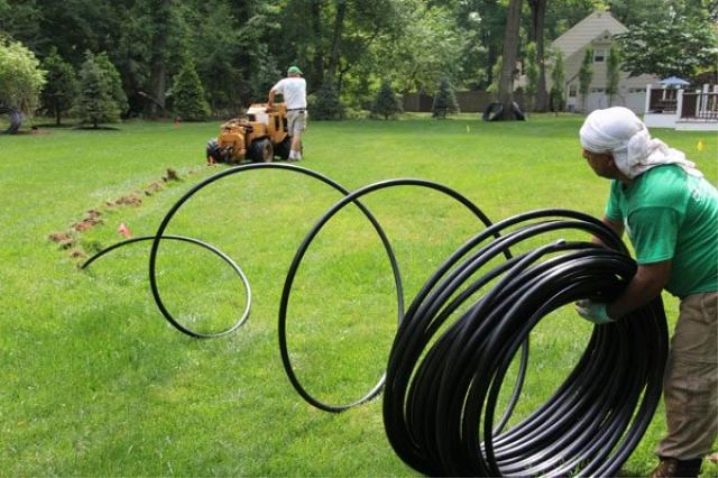
For information on how to choose a hose for irrigation, see the next video.

































































The comment was sent successfully.